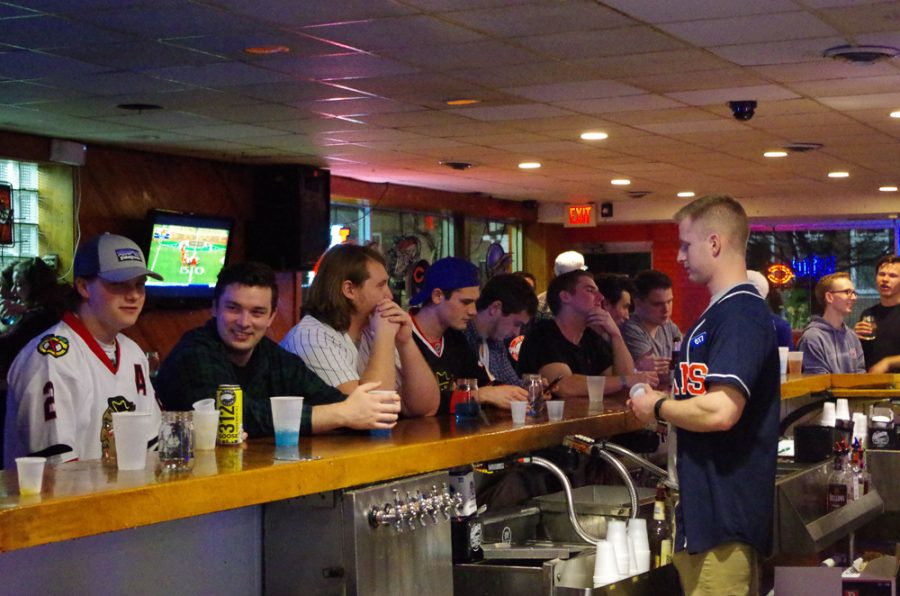KAM’s penguin visit should be more than a photo-op
Students sit at KAM’s bar on Tuesday, Feb. 21. Columnist Hayley Nagelberg is excited about Blueberry the penguin’s visit, and thinks students should be more informed about endangered species.
Apr 25, 2017
I finally remembered to call my Dad last week to catch up on life. After talking for a good half hour, he told me he had to get back to work. I yelled for him to wait a minute — I had forgotten to share my very important news; a penguin was coming to campus for a visit.
If you need to get in touch with me this Friday starting at 5 p.m., you can come talk to me at KAM’s. I’ll be there with Blueberry, the South African penguin from the Newport Aquarium in Kentucky.
KAM’s post about this event, in which Blueberry will be taking pictures with students at the campus bar, says we cannot ice out with Blueberry, but we can get drink deals. And more importantly, we can raise awareness and funds for the Wave Foundation’s penguin habitat conservation program.
I’m ecstatic for Blueberry’s visit. However, I’m also sad that it has reached the point where in order to encourage people to pay attention to serious concerns for the survival of various species, they must bring an animal to a college town bar and exchange drink deals for recognition.
Numbers vary, but there are thousands of mammals, amphibians, fish, invertebrate and plant species at risk of extinction. To the knowledge of the scientific community, in the last 500 years at least 1,000 species of animals have gone fully extinct.
Get The Daily Illini in your inbox!
In the past, large waves of extinction came from rare natural occurrences like asteroids or volcanoes. Today, a large part of the cause of this crisis comes from ecosystems which are no longer supporting their native animals as well as they once did.
Earlier this year, it was announced that the Leibniz Institute for Zoo and Wildlife Research had joined with the Zoological Center Tel Aviv-Ramat Gan Safari to create a ban on DNA of animals at risk of going extinct in the next number of years.
This project is being referred to as a frozen zoo. The samples are kept in tubes at negative 196 degrees Celsius and can supposedly be stored for over 3,000 years. This initiative, one of three in the world, is an incredibly progressive idea that shows both great foresight but also a very sad reality about the state of this crisis.
Besides this very scientific approach to preserving our world’s abundant wildlife diversity, efforts like sending Blueberry to a college campus are much more the norm.
Cute flashy videos and easy-to-read listicles show us the cutest animals we are at risk of losing and play on people’s emotions to step in and take a more active role in addressing this problem. There are numerous conservation efforts that can use financial assistance and many ways we can each spread information about the need to conserve the wildlife of our world.
However, there is also a lot we don’t know about how to entirely change this trend — for now the most important task is to make sure people are aware.
We may not be able to ice out with Blueberry, but we do have the opportunity to start a conversation on the issue of wildlife conservation and hopefully become involved in future ways to make a tangible difference.
Hayley is a sophomore in ACES.






